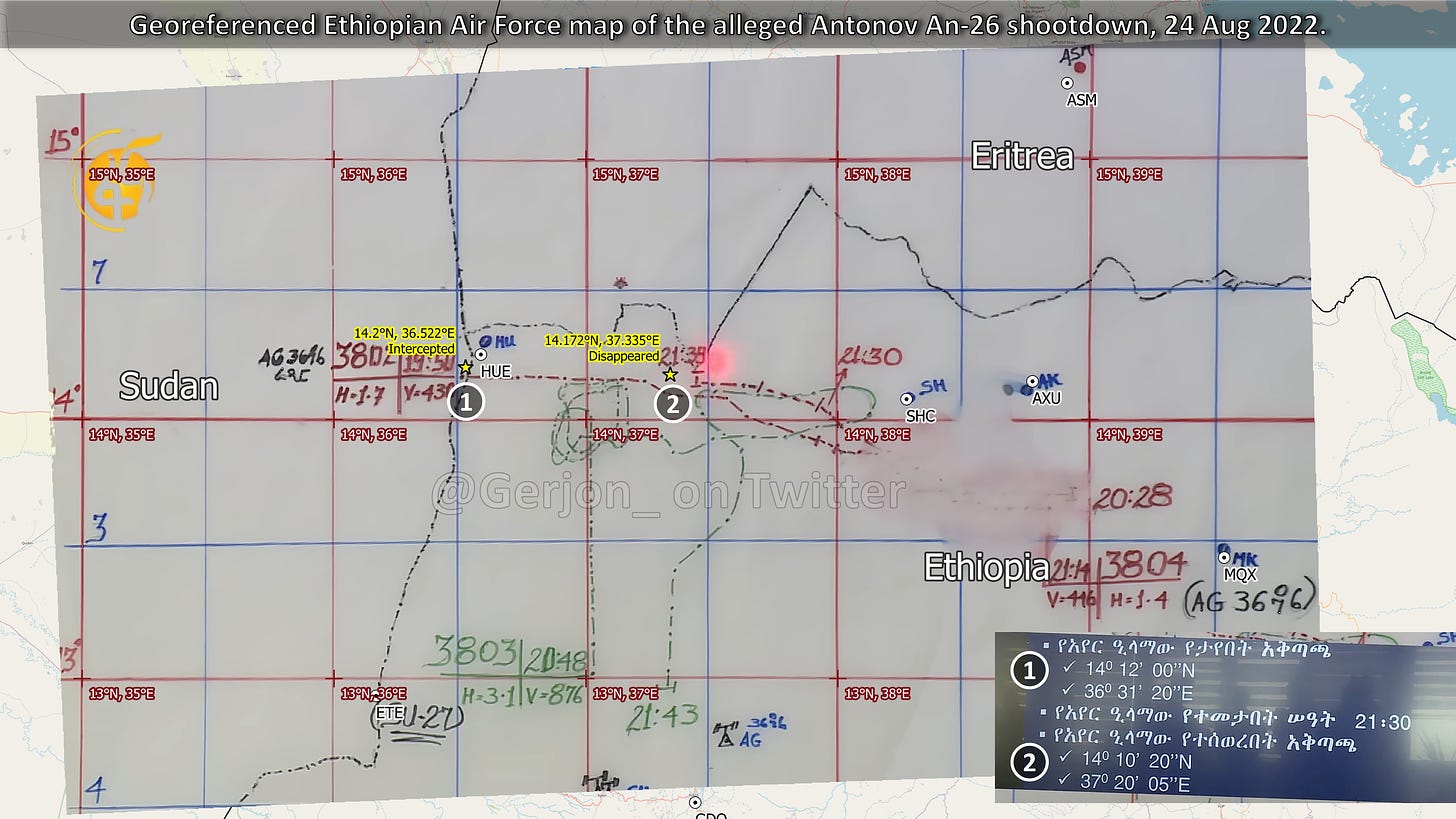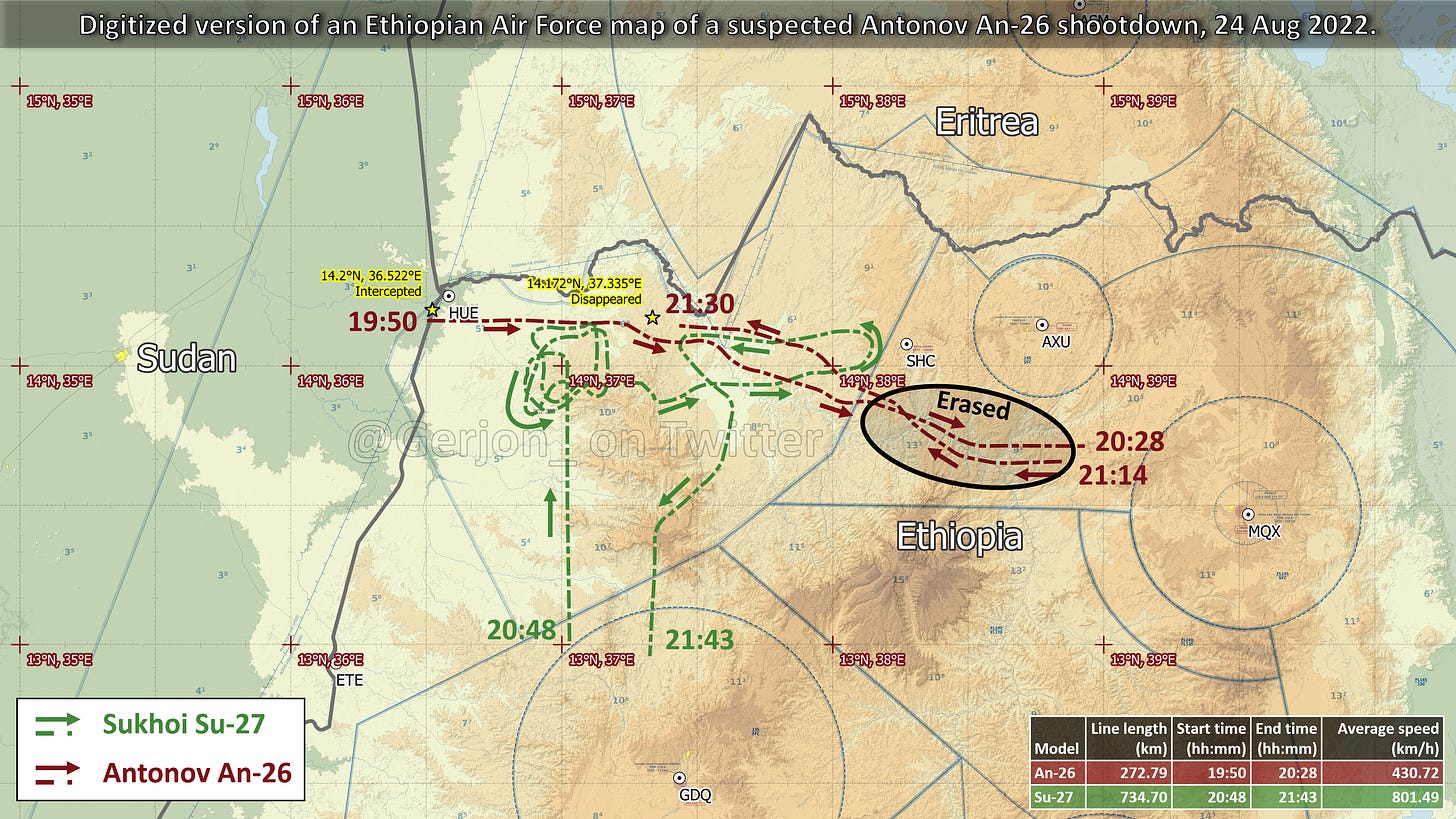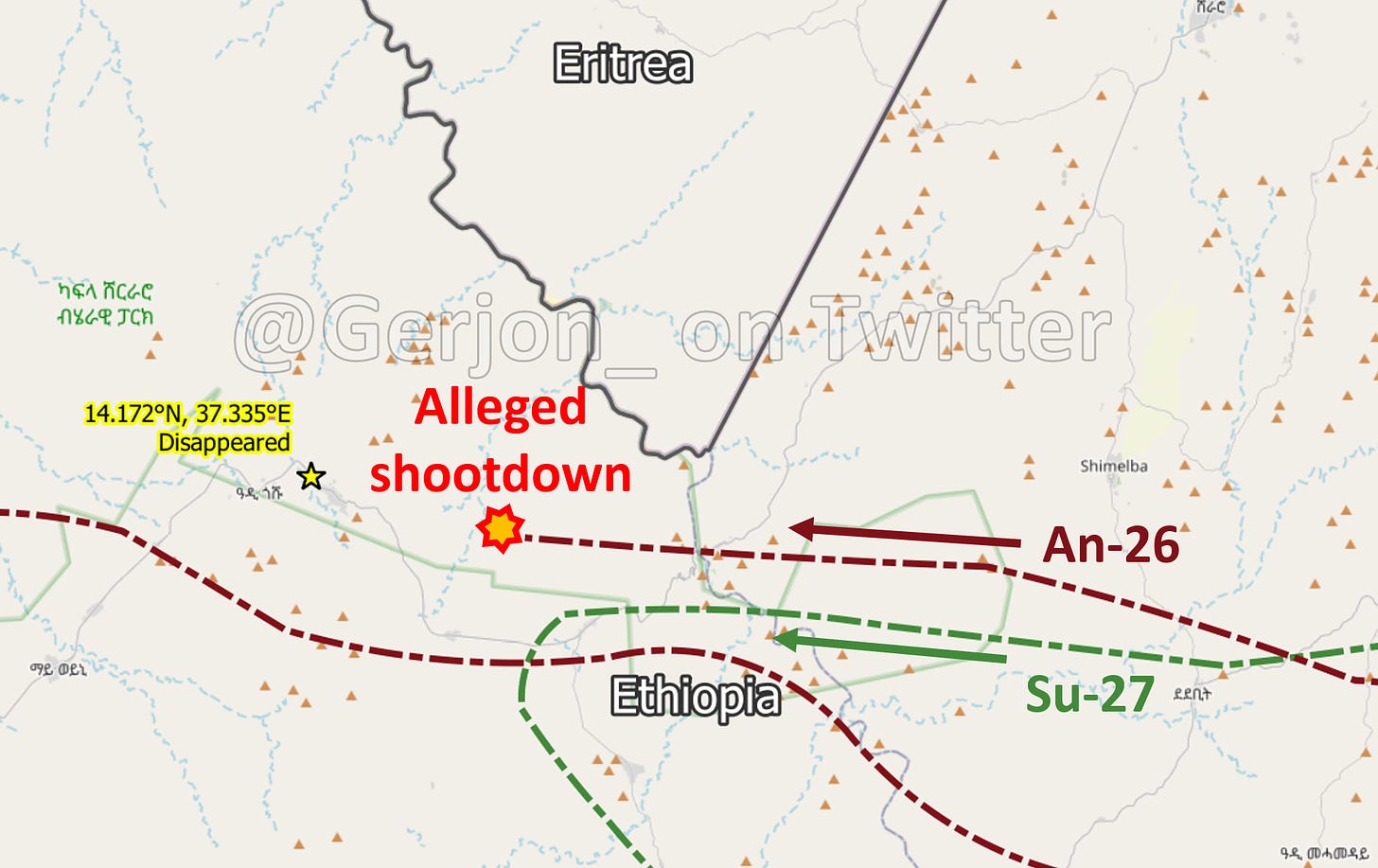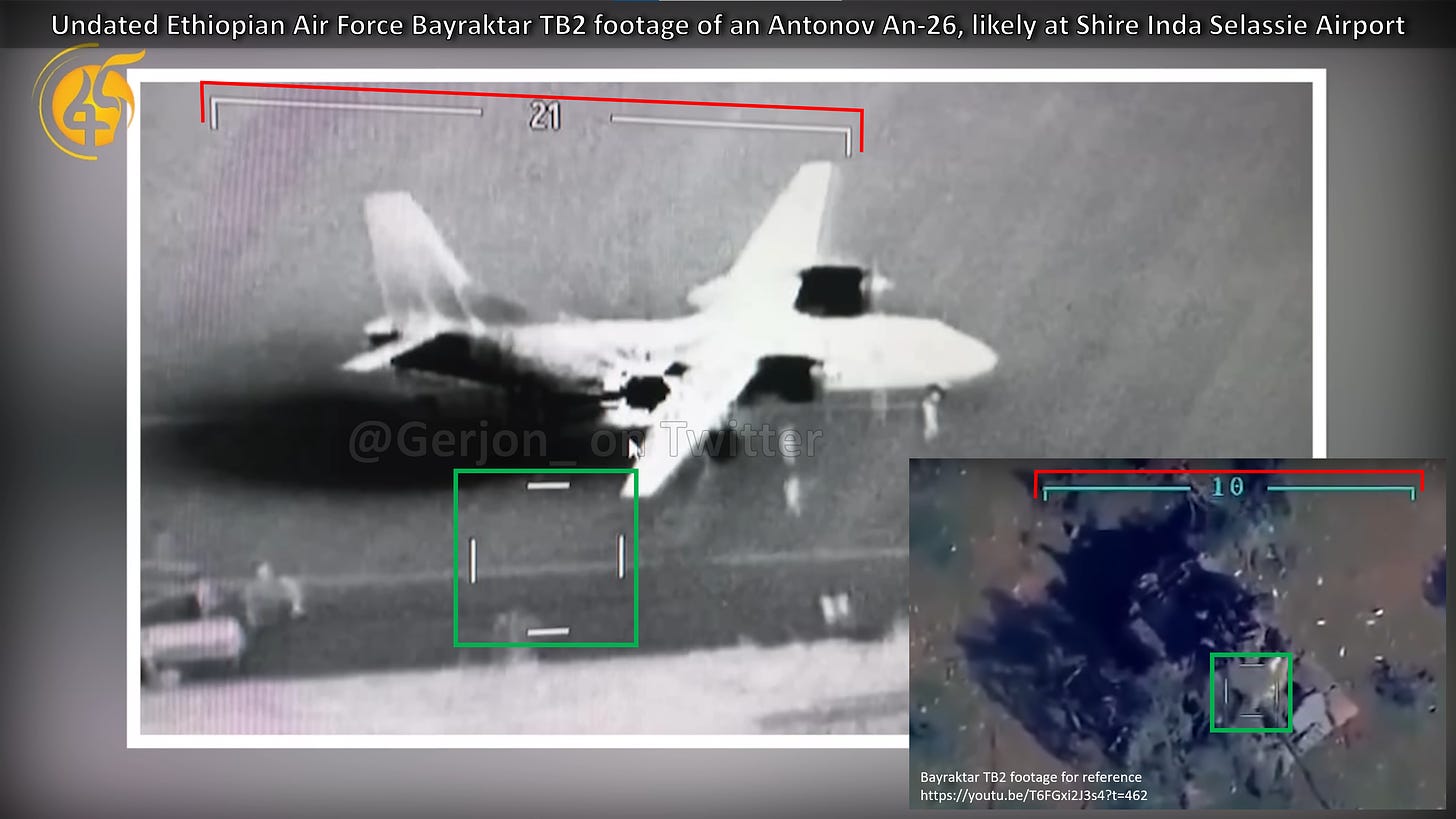Two interesting pieces of information.
US Sanctions
The first was the assurance that US Congressman Brad Sherman was given on Thursday 17th November by the US Assistant Secretary of State for African Affairs, Molly Phee, that Washington would impose further sanctions against Eritrea, if its troops did not withdraw from Ethiopia.
In this exchange, Congressman Sherman accuses Eritrean troops of committing atrocities inside Tigray, saying “there is no legitimate reason for Eritrea to be inside Ethiopia.” He then asks: “Will you support additional sanctions on Eritrea, if they fail to withdraw their troops, including sanctions on President Afewerki himself, and on mining in Eritrea?”
Phee replies that she “absolutely” concurs with the Congressman’s negative assessment of Eritrea’s role in Ethiopia and that it is “positive” that the role of foreign forces is part of the Pretoria and Nairobi agreements. The Congressman then says: “But if Eritrea does not withdraw, you would do those sanctions? To which Ms Phee says, yes.
Congressman Bradshaw also asks about not restoring Ethiopia’s access to American markets via AGOA (a development which cost Ethiopia thousands of jobs in the clothing sector) and that the US would not support financial aid to Ethiopia via the IMF or World Bank, until full restoration of aid and services, including the internet, to Tigray. Ms Phee says Washington has “made clear to the Ethiopian government that full implementation of the Pretoria and Nairobi agreements is essential to restoring the partnership which we enjoyed.”
She also said that the freeing of tens of thousands of Tigrayans from detention centres was part of the US’s dialogue with “all those who committed atrocities during this terrible conflict.”
Arms for Tigray
Abren, which describes its website as written by “a group of Ethiopian Americans in the Washington D.C., Maryland, and Virginia area who envision a strong and mutually beneficial relationship between the United States and Ethiopia” published an interesting article on 29 August, which is reproduced below. I missed it when it was first published.
For context, there were other reports at the time of flights into Tigray, but it was never clear exactly what they carried and what happened to them. This is confirmed by other journalists. Abren asked an interesting questions:
“did Ethiopian authorities sit on this intelligence, and if so why? A few days ago, the Ethiopian air-force reported the downing of an Antonov 26 flight in Ethiopian airspace. How long had this been going undeterred or undetected? Five months since April?”
The flight analyst, Gerjon, published a separate analysis of the story, which is also reproduced below.
This is his conclusion.
The question that arises in all of this is: does this prove that the shootdown actually happened? Given the level of detail and the realism of the route information in the Ethiopian Air Force whiteboard map, it does not seem unlikely that something did indeed happen here. In other words: if it’s a fake, it’s a very good fake. It now seems more likely that these flights from Sudan into Tigray do indeed exist.
However, a lot of information is still missing: Who is the operator of the aircraft? What is the registration of the aircraft? What route is it operating on? What sort of cargo was it carrying? More importantly, there is no evidence for an actual shootdown. There is no video proving a shootdown, there are are no pictures of a wreckage and no known sightings of a recent wreckage on satellite imagery either. Because these questions are still unanswered, I remain undecided about what really happened here.
Many questions still outstanding…
Secret Foreign Flights Arming TPLF
AUGUST 29, 2022
In an April 2022 podcast, William Davidson of the Crisis group indicated he had “Solid Evidence” of TPLF re-arming itself, thanks to dozens of Antonov flights from Sudan to the Tigray region of Ethiopia. His claim that evening flights had been taking place was hardly noticed, but there is also some evidence of locals noticing these flights. However, the wider Ethiopian public had little knowledge of this fact.
William Davidson of the International Crisis Group hinted there have been arms laden cargo planes delivering weapons to the TPLF for some period of time From April 2022 until August 2022.
On August 24, 2022, Prime Minister of Ethiopia revealed they had knowledge of arms laden foreign cargo flights flying in at night from Sudan into Shire airport in the northern Tigray region. According to the prime minister, Ethiopian intel had known of these overnight flights for several months and had tangible information about their origin and their payload.
This revelation is indeed monumental. It discloses several things. For one, it shows the extent to which the TPLF has become a proxy for regional actors seeking to destabilize Ethiopia. Second, it shows the extent to which foreign patrons of the TPLF are willing to go to sustain the insurgency. Thirdly, now that the issue has been made public, it inevitably becomes an inflection point likely to drag more outsiders into Ethiopia’s northern conflict. Lastly, it behooves the Ethiopian authorities to demonstrate clearly how this has been happening and for how long.
Ethiopia’s Air Force Chief in press briefing revealed the shooting down of arms laden cargo plane headed for TPLF rebels in Tigray for the first time on on August 26, 2022.
Indeed, there are so many unanswered questions here, but overall, the revelation only adds a level of credence to what many had already suspected. TPLF’s overt invitation for Egyptian support was perhaps missed by many Western observers since the discourse had been largely in Tigrigna and among supporters. Nonetheless, the desire to do so has always been there, and now has come to full fruition.
The flight paths are also another point worth considering. Flying right below the town of Humera and coming from the direction of Sudan is clear collusion by Sudanese authorities. Even if flights are not originating from Sudanese bases, certainly the government in Khartoum is aware and gave greenlight for its air space to be used by a third party.
Lastly, did Ethiopian authorities sit on this intelligence, and if so why? A few days ago, the Ethiopian air-force reported the downing of an Antonov 26 flight in Ethiopian airspace. How long had this been going undeterred or undetected? Five months since April? Public interest to all of these questions will likely prompt parliament to demand the details. The Ethiopian public should know the dangerous role of foreign actors in perpetuating the conflict in the north.
Shot down or not shot down? Assessing Ethiopian Air Force claims.

Aug 27
On Wednesday 24 Aug 2022, Ethiopian leaders first claimed the shootdown of an Antonov An-26 transport aircraft that had entered restricted airspace over Northern Ethiopia. However, concrete evidence for the event has yet to be presented. This might be because much of the war-torn Tigray region remains cut off from the rest of the world, because of long-term internet shutdowns going all the way back to late 2020. On 26 Aug 2022, Ethiopian Air Force Lt. Gen Yilma Merdassa appeared in a video published by the FanaBC channel, providing more details about the incident. In this blog post, I will analyze the data published in this video, and assess its authenticity.
The story
Because I do not speak Amharic, I was unable to understand the words of chief commander of the Ethiopian Air Force, Lt. Gen. Yilma Merdassa, interviewed in the video. However, I spoke to three different local people of different ethnical backgrounds, and asked them to translate his statements. According to them, Lt. Gen. Merdassa’s overview of the situation can roughly be summarized as follows:
“Civil and military radars tracked an Antonov An-26 entering Ethiopian Airspace from Sudan on 24 Aug 2022, entering a no-fly zone and not following approved routes. In Northwestern Ethiopia, overflight above 29,000 ft [Lt. Gen. Merdassa likely meant ‘below’ here, matching NOTAMs] is prohibited because of the conflict. The aircraft and its destination were unknown to Ethiopian authorities, prompting the Ethiopian Air Force to scramble a Sukhoi Su-27 to investigate. The crew of the Antonov An-26 was asked to turn around, but did not comply. Finally, the An-26 was shot down around 21:30 local time.”
One of the key sources of information presented in the video, is an apparently hand-made whiteboard map of the situation. This map reveals several details not mentioned by Lt. Gen. Merdassa.
The map

My first challenge analyzing this map was adding a georeference, to allow me to do measurements based on this map. The horizontal and vertical red lines across the map represent degrees of latitude and longitude in the WGS 1984 coordinate reference system. Their 15 intersections (labeled in red) allowed me to easily and accurately georeference the map using a second order polynomial transformation.
The dashed black lines in the map represent international borders, with Sudan to the west, Eritrea to the Northeast and Ethiopia to the Southeast. Blue and red dots scattered around the map correspond to cities (or perhaps their nearby airports): HU for Humera (IATA code HUE), SH for Shire (SHC), AK for Axum (AXU), MK for Mekele (MQX), and to the north ASM for Asmara (ASM), the capital of Eritrea. Corresponding white dots are the actual locations of the airports, retrieved from a global airport dataset. The green line shows the route of an alleged Ethiopian Air Force Sukhoi Su-27 air superiority fighter. The red line is the route of the alleged Antonov An-26, a propellor transport aircraft.
Labels with additional information have been added by the Ethiopian Air Force, allowing us to reconstruct a timeline of the events.
The timeline
According to the labels, the An-26 (red line) first entered Ethiopian airspace around 19:50 local time. This matches the location of “interception” (or entering radar coverage?) shown later in the video, 14° 12’ 00”N, 36° 31’ 20”E, indicated with 1 on the whiteboard map. This location is very close to the border between Sudan and Ethiopia.
Following the line, we can see that the aircraft continued east. South of Shire and Axum, it looks like the line has largely been erased. However, it is still visible that the line ends SSE of Axum at 20:28. Presumably the aircraft then left Ethiopian radar coverage. Looking at the available time and direction of flight, the aircraft might have been descending for Mekele, capital of the Tigray region, located some 70 km further east.
At 20:48, 20 minutes later, an Ethiopian Air Force Sukhoi Su-27 air superiority fighter entered the Tigray region, circling over Northwesternmost Ethiopia, far west from the position of the An-26.
At 21:14, around 45 minutes after “disappearing” near Mekele, the Antonov An-26 popped back up west of Mekele, near where it was last seen, and went on its way back to Sudan. According to the map and Lt. Gen. Merdassa, the aircraft was shot down around 15 minutes later, at 21:30, and was last seen around 14° 10’ 20”N, 37° 20’ 05”E, where it again “disappeared”. This location marks the alleged crash site of the aircraft and is marked with 2 on the map, and is close to the location where the Su-27 turned South, leaving the area.
There are clear differences between the story described on the map and the story described by Lt. Gen. Merdassa. The most significant difference is that the story of the Lt. Gen. Merdassa does not mention what happened between 20:28 and 21:14, and does not describe that the aircraft ever left Ethiopian radar coverage and may have even landed in Mekele.

One of the steps in my analysis was to check whether the routes drawn by the Ethiopian Air Force could be realistic. I therefore calculated the average speed of the flight into Ethiopia by the An-26 and the Su-27. My measurements of the route length of the flight portions drawn by the Ethiopian Air Force equal 272.79 and 734.70 km for the An-26 (heading east) and Su-27 respectively.
According to the labels added to the map, the An-26 and Su-27 entered the region flying at a velocity (v) of 430 and 876, respectively. Although no units are given, the only realistic unit here is km/h. Combining the route length mentioned above with the timestamps given on the map, the An-26 and Su-27 had an average speed of 430.72 km/h and 801.49 km/h respectively. These values are very similar to the values indicated by the Ethiopian Air Force and seem realistic for the respective aircraft types.
At 876 km/h, the initial speed of the Su-27 was slighly higher than my calculated average speed. This can be explained by the fact that the Su-27 intercepted the An-26, and may have slowed down to keep up with the it, before it got shot down. This is confirmed by the map, which shows a parallel green and red line near the location where the An-26 got shot down at 21:30, as shown below. Following the shootdown, the Su-27 turned south, likely returning to base.

Footage from a Bayraktar TB2
At 01:53 in the video, an image of a propellor aircraft (likely Antonov An-26) can be seen. Judging by the level of detail and angle, the footage was likely made from a UAV. The Ethiopian Air Force is known to operate three types of UAVs: Iran’s Mohajer-6, China’s Wing Loong and Turkey’s Bayraktar TB2. Comparison of online footage of the interfaces of each of these drones to the footage seen in the video leads me to conclude that this footage was likely made by a Bayraktar TB2 UAV.
In the example below, I found similar footage made by a Ukrainian TB2 . Both clips feature a central scale bar to the top (red) and a ‘crosshair’ consisting of four lines in a square shape (green).

The next question that arises from this clip, is where it was made. Upon close inspection, we can see that the An-26 is parked on top of a line. Below and in parallel with the wings of the An-26, a second line can be seen, which becomes wider towards the end (yellow U-shape in the image below). Perpendicular to this wider portion is a second line (blue), followed by what looks like a road with vehicles and people. This road marks the edge of the apron. Next to the road, vegetation can be seen. No taxiways or other features can be seen.

I have been able to identify two airports in Ethiopia that exactly match this description: Robe Airport in Oromia and Shire Inda Selassie Airport in Tigray. Given the ongoing conflict, I consider it more likely that the video was made at Shire Inda Selassie Airport.
Looking at the route information on the map, it however seems unlikely that Shire was the destination of the 24 Aug 2022 flight. The imagery provided may therefore be archive imagery of an earlier flight. This footage could confirm earlier claims of cargo flights from Sudan landing at Tigray airfields, for which no evidence has been found so far. It is also in line with statements by PM Abiy Ahmed Ali and Lt. Gen. Merdassa that Ethiopia has been monitoring earlier similar flights, without taking direct action against them.
Final assessment
The question that arises in all of this is: does this prove that the shootdown actually happened? Given the level of detail and the realism of the route information in the Ethiopian Air Force whiteboard map, it does not seem unlikely that something did indeed happen here. In other words: if it’s a fake, it’s a very good fake. It now seems more likely that these flights from Sudan into Tigray do indeed exist.
However, a lot of information is still missing: Who is the operator of the aircraft? What is the registration of the aircraft? What route is it operating on? What sort of cargo was it carrying? More importantly, there is no evidence for an actual shootdown. There is no video proving a shootdown, there are are no pictures of a wreckage and no known sightings of a recent wreckage on satellite imagery either. Because these questions are still unanswered, I remain undecided about what really happened here.

የኤርትራ ወታደሮች እስካሉ ትጥቅ አንፈታም – አቶ ጌታቸው ረዳ
ከትግራይ ተገደውም ሆነ ፈቅደው ከወጡ በኋላ ተመልሰው በትግራይ ሕዝብ ላይ ወረራ ወይም ጥቃት እንደማይፈፅሙ ምን ዋሥትና አለ፥፥የቅርብ የታሪክ መዛግብትን ብንመለከት የምንረዳው ነገር ቢኖር የኤርትራ ሠራዊት በተለያዩ ጊዜያት ተደጋጋሚ ሠርጎ ለመግባት ሙከራ ሲያደርግ እንደነበር ብዙዎቻችን የምናውቀው ሲሆን ይህንን ለመረዳት የምትፈልጉ ከዚበታች የተጠቀሱትን መዛግብት አንብቦ መረዳት ይቻላል፥፥
The Ethiopian government on Saturday agreed with commanders of the Tigray People’s Liberation Front (TPLF) that the rebel fighters would disarm once Eritrean troops leave the war scene.
However, how could we be sure of another attack or invasion regadless of time or place within Tigray once they leave Tigray ?
No one has ever imagined Abiy Ahmed, along with Higdef regime, will launch a genocidal campaign after 3 decades !!!
The following links lead to stories of eritrean attack on Tigray soil before it waged full scale war and genocide against Tigray.
1. Berhane Kahsay Tigrai Online, Ethiopian News, June,27,2016 https://www.tigraionline.com/articles/eritrean-mcenaries-killed.html
2. Tigrai Online, Ethiopian News, July 19, 2016
https://www.tigraionline.com/articles/ethio-fed-police-killed.html
3. Tigrai Online, Ethiopian News, May 12, 2016
https://www.tigraionline.com/articles/eritrean-armed-group16may.html
4. Tigrai Online, Ethiopian News, June 30, 2016
https://www.tigraionline.com/articles/send-isaias-to-icc.html
Disarmament of TDF will certainly evoke autoritarian leadership style among the top dogs of Ethiopia who could potentially compel every powerful state to accept their order without questioning . Even though many of TDF members are receiving a promise to join the federal forces they will likely be under a heavey scrutiny and treated as a second class members of ethiopian army and under amhara dominated leadership.It is clear for all of us the the peace agreement falls under vicious circle but more of a gradual suicidal act like smoking tobaco. Let Tigray be free from Higdef, eritrean army, Fanos and free indepedent country in the east of Africa!!!